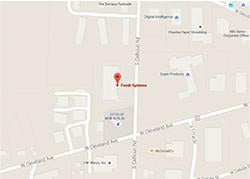Free Shipping on Orders Over $299 (Restrictions Apply)
Force Curing Equipment
Everyone wants their coatings to skin over, be dust-free, or dry faster. There are various technologies to accelerate the force curing of a coating such as; air movement, convection heat (oven) and infrared, besides accelerator additives from your coating supplier.Additional clean compressed air movement across a wet coating will accelerate the time to skinover and cure. Dry-Off Guns with the aid of a venturi design can genereate a lot of air flow from a 8 cfm compressor.
Ovens (convection heat) can be batch or pass through in design, and can elevate the inside ambient temperature to over 500 degrees F. Ovens for plastic and wood substrates operate between 90-150 degrees F. While ovens for metal substrates operate between 150-500 degrees F. These ovens run on gas, electric, oil, propane, or steam and cure from the outside of the coating to the inside substrate.
I.R. Ovens (infrared) can also be batch or pass through in design. Unlike a convection oven the curing process is from the inside out. The specific infrared absorption wave length of organic coatings is most efficient between 3 to 10 microns. The entire substrate mass does not have to be raised to a specific curing temperature, which can reduce the curing time by 1/3. Curing from the inside out greatly reduces the chance of trapping water or solvents. These I.R. units or ovens run on gas, propane, or electric.
INFRARED FORCE CURING TECHNOLOGY 101
Infrared curing is energy radiated directly on a surface by a source (emitter). Infrared (I.R.) curing is short, medium, or long wavelength. The wavelength passes through the coating and upon making contact with the substrate reflects back out of the wet coating. Two things occur at this time, the substrate starts to warm up and drive off solvents or water, and secondly as the wave length reflects back out of the wet coating it brings with it the solvent or water.
Typical benefits of Infrared Curing
- Cures the coating from the inside out, which is the best technology
- Faster cure times than any other air-dry coating curing technologies
- I.R. ovens require a lot less floor space than convection ovens
- Generally the finish is smoother than other curing technologies
Disadvantages of Infrared Curing
- Rapidly cures what it sees, leaving the hidden areas to cure at there normal air-dry rate. Most manufacturers are okay with the hidden areas drying at a slower rate, because the hidden areas do not effect there handling and packing schedule.
MEDIUM -vs- SHORT WAVE LENGTH
Since long wavelength does little for force curing we will only discuss medium and short wave length.
Medium wave length offers moderate curing of the coating and is the preferred choice for substrates that are temperature sensitive such as: insulation, paper, plastic, and wood. Also medium wave length saves up to 50% energy over a short wave system.
Short wave length is more intense and will cure the coating sooner and is the choice for pre-heating metals, and curing coatings and powder on metal substrates. Short wave length can be used on temperature sensitive substrates in conjunction with the monitoring of the products curing temperature, and with the cycling on and off of the intense short wave length.
Many times an I.R. oven design will consist of a combination of Medium wave at the beginning of the curing process, and short wave length as a "kicker" at the end of the oven.
PORTABLE I.R. APPLICATION INSTRUCTIONS
First let the wet film flash-off and start to skin-over before using the I.R. Apply the portable I.R. at a minimum distance of 18" to 24". The further the I. R. head is away from the subject the larger the area of cure. Vary the time and distance until you achieve the proper cure. Time not temperature is the major factor in determining full cure. Air movement across the curing coating is recommended to accelerate the cure of water-base coatings. Normal full cure time of medium wave length is 20 to 40 minutes, and short wave length is about half that time. Before buffing or wet sanding allow at least two hours for the coating to cool-down.
